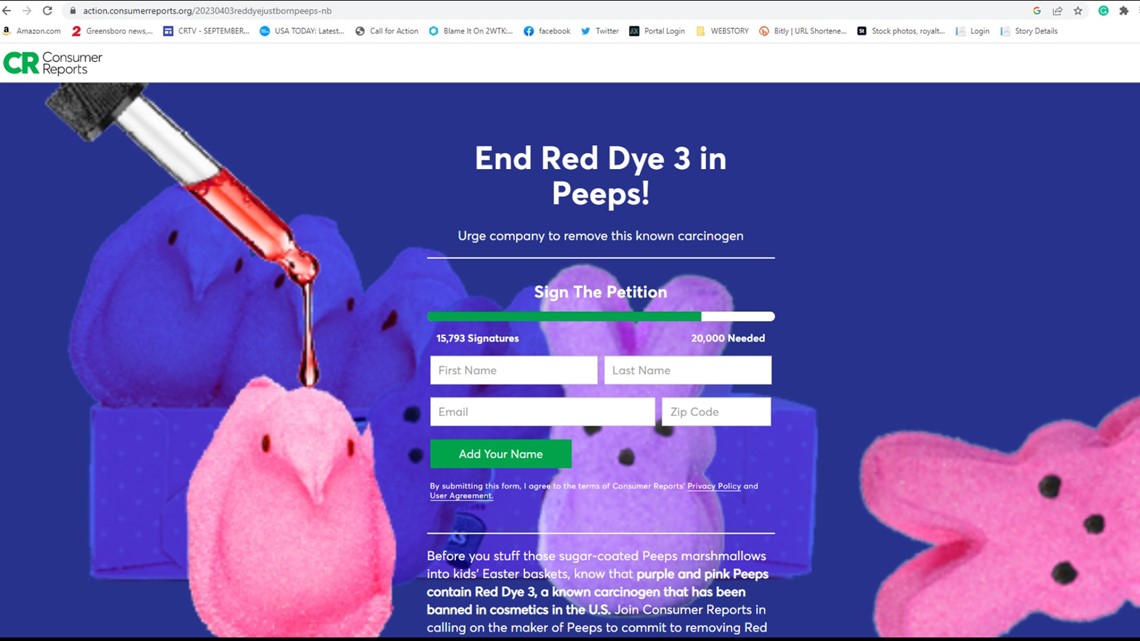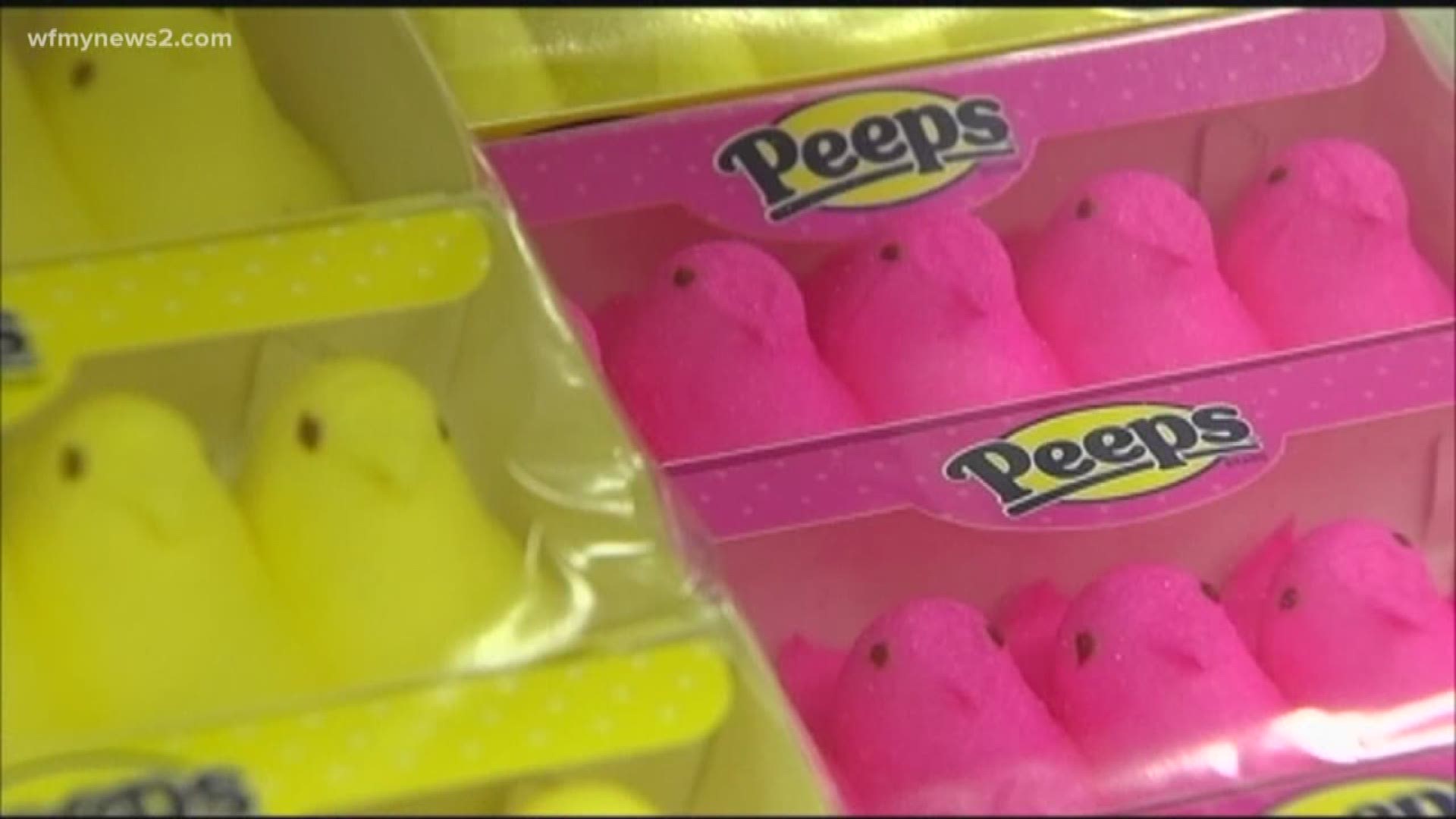GREENSBORO, N.C. — The FDA banned Red Dye #3 from being used in cosmetics, that was in 1990. But Red Dye #3 is still being used in your food, including those Easter favorites, Peeps.
“Red Dye #3 has been linked to cancer in animals and the FDA has prohibited its use in cosmetics and externally applied drugs, yet it is still used in many of the foods we eat,” said Lauren Kirchner of Consumer Reports.
The FDA requires manufacturers to list Red Dye #3 on all food labels. You might be surprised to find it in several food and drinks in your pantry right now.
Last October, Consumer Reports along with more than 20 other advocacy groups signed a petition from the Center for Science in the public interest, asking the FDA to prohibit the use of Red Dye #3 in foods, dietary supplements, and ingested drugs.
In response to that, an industry trade group, The International Association of Color Manufacturers told Consumer Reports that “there is not enough evidence associating the dye causes problems” and maintains it is safe at the levels most people consume.
“Red Dye #3, also known as Erythrosine, is a synthetic dye derived from petroleum, and is used in food and drinks to give them a kind of bright cherry-red color,” said Kirchner.
You'll find Red Dye #3 in many candies on the grocery aisle. It is a staple for brightly colored processed foods
PEEPS WITH RED DYE #3
It just so happens it's Easter and Red Dye #3 is found in eight kinds of Peeps. Consumer Reports lists them as:
Peeps Pink Marshmallow Chicks
Peeps Pink Marshmallow Bunnies
Peeps Lavender Marshmallow Chicks
Peeps Lavender Marshmallow Bunnies
Peeps Hot Tamales Marshmallow Chicks
Party Cake Peeps
Peeps Fruit Punch Marshmallow Chicks
Peeps Wildberry Marshmallow Bunnies.
CONSUMER REPORTS PEEPS PETITION


Consumer Reports is calling out the Peeps manufacturer, Just Born, for using Red Dye #3. CR even has a petition right now, asking them to stop using the dye. You can sign it as well.

